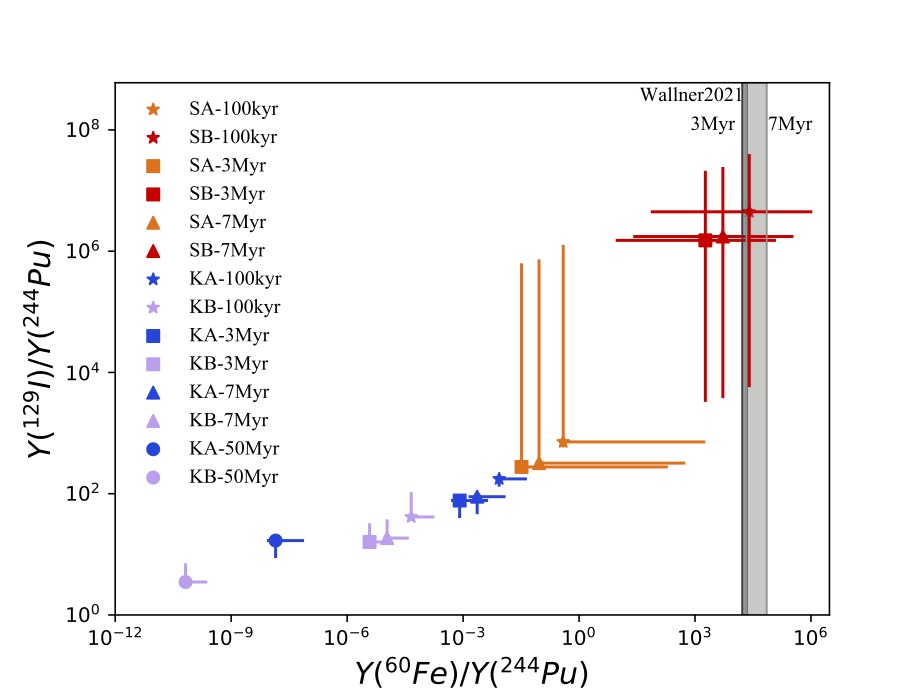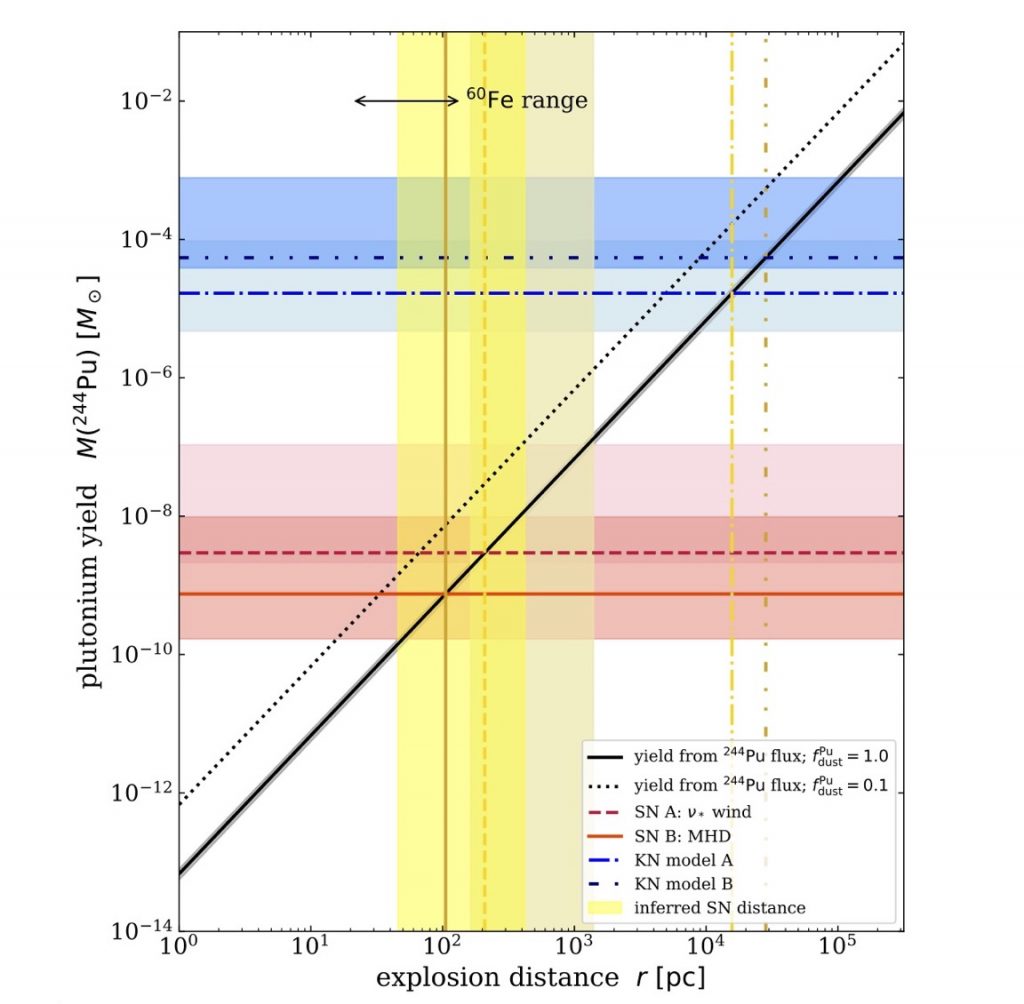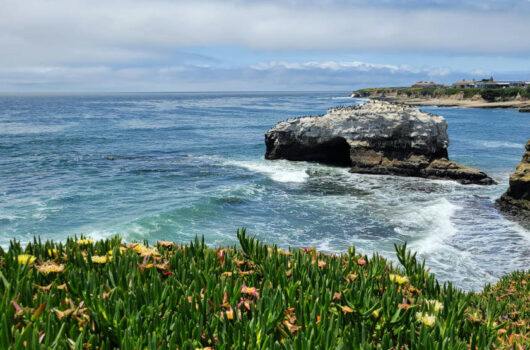r-Process Radioisotopes from Near-Earth Supernovae and Kilonovae

Near-Earth explosive events are inevitable. Supernovae (SN) explode in our Milky Way roughly every ∼ 30 year (yr) on average. This suggests that supernova explosions within 100 pc of Earth are expected to have occurred every few Myr. 60Fe (half-life 2.6 Myr) has been detected in deep ocean sediments and crusts, the Antarctic snow, as well as the in the lunar regolith and cosmic rays, over the past decades. There is a clear peak of 60Fe measurements at 2-3 Myr ago, potentially another pulse at ~7 Myr ago, indicating there is at least one near earth nucleosynthesis event recently, favorably supernovae within ~100pc. The geological discovery of 60Fe heralded a new era of laboratory astrophysics using relic live radioisotopes to explore events in the solar neighborhood, using them to understand quantitatively their contributions to nucleosynthesis.
Plutonium-244 is a heavy and long-lived radioactive actinide nucleus, which is only made in a very neutron rich environment via robust r-process nucleosynthesis, likely the neutron star mergers (NSM). As shown in Figure 1, early data in deep-ocean ferromanganese crusts showed hints of 244Pu in the past millions of years. The measured 244Pu flux extends from nearly the present back to at least 12 to 25 Myr ago and, within the large uncertainties. New data by Wallner et al (2021) confirmed the 244Pu signal and could accommodate a larger flux around the time of the 60Fe pulse(s) at∼3 Myr ago. These results thus motivating a systematic study of the implications of the 244Pu signal and the possibility of using geological measurements of r-process radioisotopes to constrain the type of near-earth nucleosynthesis events.

In recent work, we carried out the r-process nucleosynthesis calculations of the abundances for the radioisotopes that should be found along with 244Pu, and which can test whether these are synthesized in supernova explosions or in a neutron star merger leading to a kilonova (KN). The long-lived r-process radioisotopes of interest are those with half-lives between ~1 Myr to 500 Myr, i.e., 93Zr, 107Pd, 129I, 135Cs, 182Hf, 237Np, 247Cm and U isotopes. We adopted two SN models, modified SN neutrino driven wind model SA and magnetorotational SN model SB, and two KN models, normal combined KN model KA and actinide boost KN model KB.
For example, Figure 2 is the plot of our calculated ratios of 129I to 244Pu versus 60Fe to 244Pu for different models. Comparing our calculations to the deep-ocean sediment measurements of 60Fe over 244Pu ratio in Wallner et al (2021), we can exclude the KN models, if the radioisotope delivery is a one-step process, i.e., directly deposit from the near-earth event, while the “modified” SN neutrino driven wind and magnetorotational SN models could work, but these events must be rare compared to the normal supernovae.

We could also make use of the calculated 244Pu yields and the resulting “radioactivity distance” or explosion distance that is calculated from the ejected radioisotope mass and the flux measured on the earth to constrain the near-earth event. The plot here shows 244Pu yields in solar mass versus corresponding explosion distance in parsec, for a one-step process. Our SN models correspond to explosion distances of around 100 parsecs, which are consistent with the 60Fe flux measurements. However, the KN models correspond to much larger distances, i.e., bigger than1 kpc, which would place the explosions implausibly far for any ejecta to reach the Earth.

This suggests a different scenario is needed for the kilonova case: a “two-step” process in which the propagation of the ejecta from a kilonova occurred more than about 20~Myr ago, is followed by mixing in the proto-Local Bubble, and then deposition on Earth with the aid of the SN blast happened several Myr ago.
We also make predictions for future accelerator mass spectrometry (AMS) searches of the interesting r-process radioisotopes in deep ocean crusts and sediments for both the SN (one step) and KN scenarios (two step) as in Figure 4 here. Their presence or non-detection in future measurements could constrain significantly models of r-process nucleosynthesis. With current AMS sensitivities, 129I is the most promising target. Indeed, existing measurements of 129I already probes models.

Thus, the future geological searches for the long-lived r-process radioisotopes in deep-ocean Fe-Mn crusts, in the regolith samples brought to Earth recently by the Chang’e-5 lunar mission and upcoming missions including Artemis, could potentially distinguish between SN and KN scenario for the near-earth events, and offer an important new probe of possible sources of r-process isotopes. These searches and follow-up studies will also extend and expand the investigation of the potential repercussions on Earth of astrophysical events, including possible impacts on the biosphere.
This introduction was prepared by N3AS fellow Xilu Wang. Credit for header image: Jesse Miller and Brian Fields.
Read More:




